Page 6
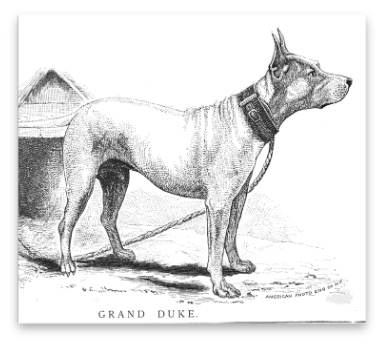
To read more about his owners, the Rutherfurds, click here.
And by clicking here, you can read some juicy gossip re the family
Things began to change in 1888 when the August Belmont, Jr. was elected AKC President. He was just the man needed for the job. The original founders had viewed the AKC more as a social club and dog shows as the pastime of the elite. AKC meetings were an opportunity to share a good meal, smoke cigars, have a few drinks, swap stories and conduct the necessary business. August Belmont, Jr. looked at the American Kennel Club and saw something different. He noted the growing number of clubs that were joining the AKC, the crowds that now attended dog shows, the rise in registrations and the public's fascination with purebred dogs.
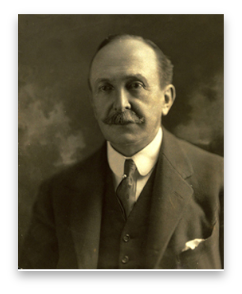
August Belmont, Jr. was a visionary who would transform the AKC into the institution we know today. He would serve as President for 28 years and, during that time he would completely revamp the club into an efficiently run organization and fend off challenges.
In my personal opinion, Belmont should be considered "the father of the modern AKC."Since I've given some background on the other major players in the early history of the AKC, I think it's appropriate that I do the same for August Belmont, Jr. I think this will help demonstrate why he was so adept as head of the AKC. A graduate of Harvard, Belmont Jr. was a millionaire, having inherited a large banking house from his father. August Belmont, Sr. was an immigrant and a self-made man. He had begun by sweeping floors for the Rothschilds and moved his way up the ladder until he owned his own bank.
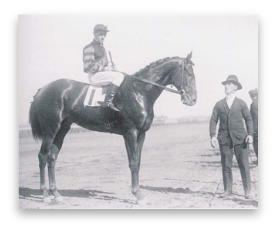
Belmont Jr. had also inherited his father's love for racehorses and his 1,100 acre breeding operation in Suffolk County, N.Y. In later years, he would breed one of the greatest of racehorses, Man o' War, and he would build one of our great racetracks, Belmont Park. He instituted the Belmont Stakes in honor of his father. He is credited with saving Thoroughbred racing in the East.
In business, August Belmont, Jr. would prove to be smart, organized and visionary, too. In later years, he would finance, oversee construction and manage New York City's first subway, the IRT. He would travel in his own private, luxurious subway car, the only such car ever built.
Though he could be loud, officious and difficult at times, Belmont Jr. proved adept at bringing people together. His father, a committed Democrat, had despised his Republican rival, the millionaire J. P. Morgan. Despite their political differences, Belmont would convince Morgan to work with him. Together, they fashioned a deal that would save and expand Westinghouse.
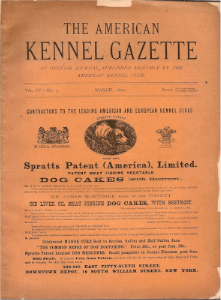
Belmont's first act as the new AKC President was to propose the publication of a monthly "Kennel Gazette." The magazine, Belmont thought, would help cement together the fancy. It could be used to publish the growing list of rules and regulations and the newly approved standards, as well as reporting on shows put on by AKC member clubs. It seems likely that he also wanted to undercut the devotion to the American Kennel Register by offering an alternate source of show information. This proposal met with stiff opposition. The main objection was that it would be too costly. So, Belmont guaranteed any losses for up to $5,000 per year for a term of five years. The first issue debuted in January 1889. The concerns proved unfounded. The American Kennel Gazette was a money-maker from the start.
Warning: shameless promotion break. Early Gazettes featured no illustrations, except for the occasional drawings that appeared in advertisements. Few of these early issues have survived. The issues from the 1800s and early 1900s are sought after collectibles. I have included issues from
1892 and 1898, in our ebay store, since they relate directly to the topic of the newsletter. I'll be adding issues from 1903 and 1905 shortly.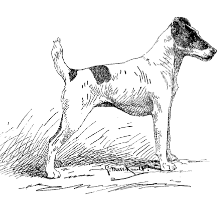
After 1898, the Gazette began to include a few photos and they borrowed an idea from Watson. The artist Gustav Muss Arnolt was enlisted to draw a pen and ink portrait of notable dogs which appeared as separate plates in the magazine.
(The one I've pictured is of Ch. Warren Remedy, the only dog to win Best in Show at Westminster three times. To read more about her click here.) In addition to being a successful artist, Muss Arnolt was a breeder and all-around judge who served on the AKC board and was a delegate for several clubs. His series of illustrations began with the May 1895 issue and continued until December of 1909. In all, he drew 191 plates which were included in the Gazette. The AKC offered these plates for separate sale to the public for ten cents. These have, of course, become highly collectible, too. They usually sell in the $50-100 price range. I'll be offering several in our ebay store when I start including the artwork. I will be adding an almost complete list of these Muss Arnolt plates to the website for those who are, or wish to start, collecting them.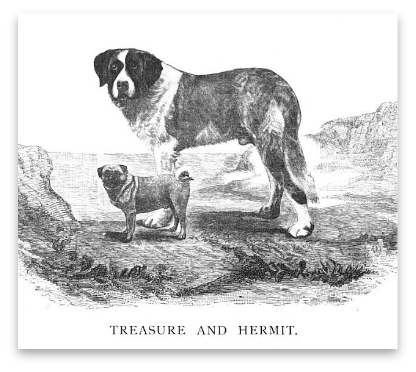
Okay, back to our story. Belmont Jr. saw that his first job as new AKC President was to silence Watson, the Club's chief critic, and to end the rival registrations in the American Kennel Register. His proposal for an AKC magazine was a first step in that direction. Now, he set out to win over James Watson. In truth, Belmont Jr. was the ideal person to undertake this task. While his money gained him access to the AKC men's club, he was socially an outsider because he was Jewish. He did not come from the sporting dog fraternity that had dominated the AKC inner circle. Instead, he raised Fox Terriers and he and Watson knew some of the same British breeders. Belmont knew that Watson was intrigued by exotic breeds and he introduced him to his wife. Carolyn Perry Belmont was the daughter of Commodore Perry, who had opened Japan to western trade. The Commodore had returned with several Japanese Spaniels as gifts for his daughter. And, Belmont sweetened the pot with money. He offered to buy the American Kennel Register.
It's clear that Belmont had been working on Watson because the following appears in the minutes from the February 1888 annual meeting: "The President stated that he thought it advisable to purchase the American Kennel Register and to suppress the same. That a contract had been drawn up and was about to be completed. It was moved and carried that the matter be allowed to remain in the hands of the President until closed."
